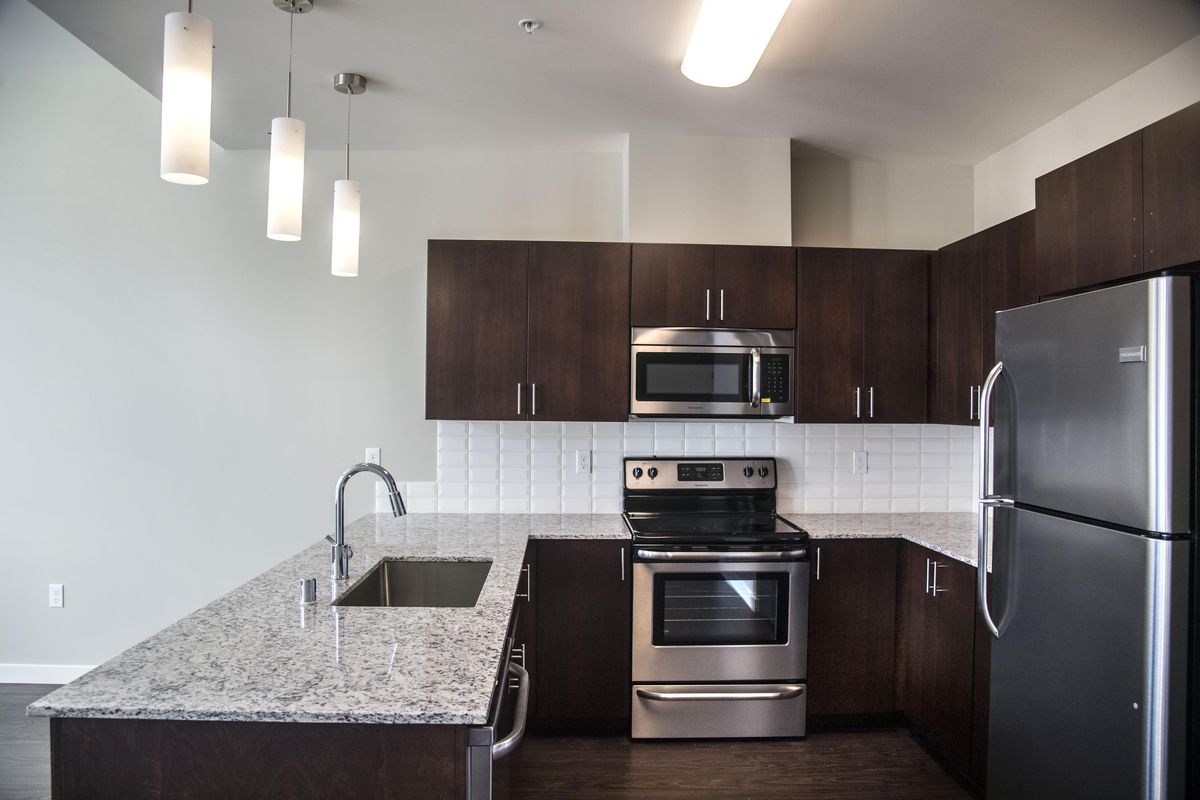Demand for urban living creates hot market for downtown Spokane apartments

When an office tenant moved out of the historic Chronicle Building last year, converting the downtown Spokane space into apartments seemed like an obvious choice to Doug Yost.
“We saw the success of the other apartment projects downtown,” said Yost, director of real estate investment for Centennial Properties, a subsidiary of Cowles Co., which also owns The Spokesman-Review. “Downtown retail is thriving. Additional housing is the next step.”
The city’s center has become one of the region’s hottest apartment markets, with vacancy rates hovering around 2 percent for the 2,500 units, according to a recent housing study.
Developers are planning new units to meet demand. Some projects, such as the 32 apartments in the Chronicle Building, include renovations of older buildings. Others are new construction.
“Every apartment I have in downtown Spokane has a waiting list,” said developer Ron Wells, who owns about 220 units in the city’s core – a figure he plans to nearly double with eventual redevelopment of the Ridpath Hotel. “The market is the best it has ever been.”
Billions of dollars of public and private investment in the city’s center over the past two decades has helped turn downtown into a desirable place to work, live, shop and play, Wells and others developers say. Following national trends, much of the demand for the units is coming from empty nesters and millennials.
At Kendall Yards just north of downtown, Greenstone Corp. has 182 apartment units and plans to construct another 150 units over the next two years.
“Our residents are choosing Kendall Yards because they see it as a downtown neighborhood,” said Tisha Goodman, regional manager for Rockwood Property Management, the rental agent.
“Millennials are waiting longer to purchase homes,” Goodman said. “Empty nesters are choosing to rent rather than buy.”
The downtown area remains one of Spokane’s largest business districts, with an estimated 25,000 workers, said Juliet Sinisterra, economic development manager for the Downtown Spokane Partnership.
For many downtown renters, the ability to walk to work is a draw.
“It creates a much simpler lifestyle. They don’t have to deal with hectic commutes,” Sinisterra said. Downtown restaurants and shops benefit as well, she said. “It creates a vibrant, 24-hour downtown, where you have people using the downtown at all hours of the day.”
The recent apartment construction represents a “third wave” of downtown housing development, Sinisterra said.
Many of downtown’s affordable housing units were built in the late 1970s or early 1980s, she said. In the early 2000s, most of the new units were condos or high-end apartments. Projects such as the Chronicle Building represent what developers call “market rate” units, she said.
Rent prices range from $995 to $1,700 a month for the one- and two-bedroom apartments. Yost expects the first units to be ready for occupancy by March or early April.
The apartments occupy four floors in the 1928 building, which once housed Spokane’s evening paper, the Spokane Daily Chronicle.
Creating the units was expected to cost about $2.9 million, according to a building permit filed with the city of Spokane last year. Yost declined to comment on the project costs.
“Our goal was to take the historic building and create a clean, modern look for the units,” he said. “Everyone loves living in a historic structure, but they still want a modern home.”
The Chronicle Building was designed by Gustav Albin Pehrson, an apprentice of Spokane architect Kirtland Cutter, who drew on European styles to create some of the city’s most memorable landmarks.
The Neo-Gothic structure has arched windows, stained glass and gargoyles on the roof.
To many, the Chronicle Building is “the white building on the back of the Review Tower,” said Marian Evenson, a partner in MMEC Architecture and Interiors, which designed the units. “It has such beautiful details, but a lot of people walk by and don’t take the time to look up.”
The new apartments reflect the exterior building’s “simple, clean and repetitive” lines, she said.